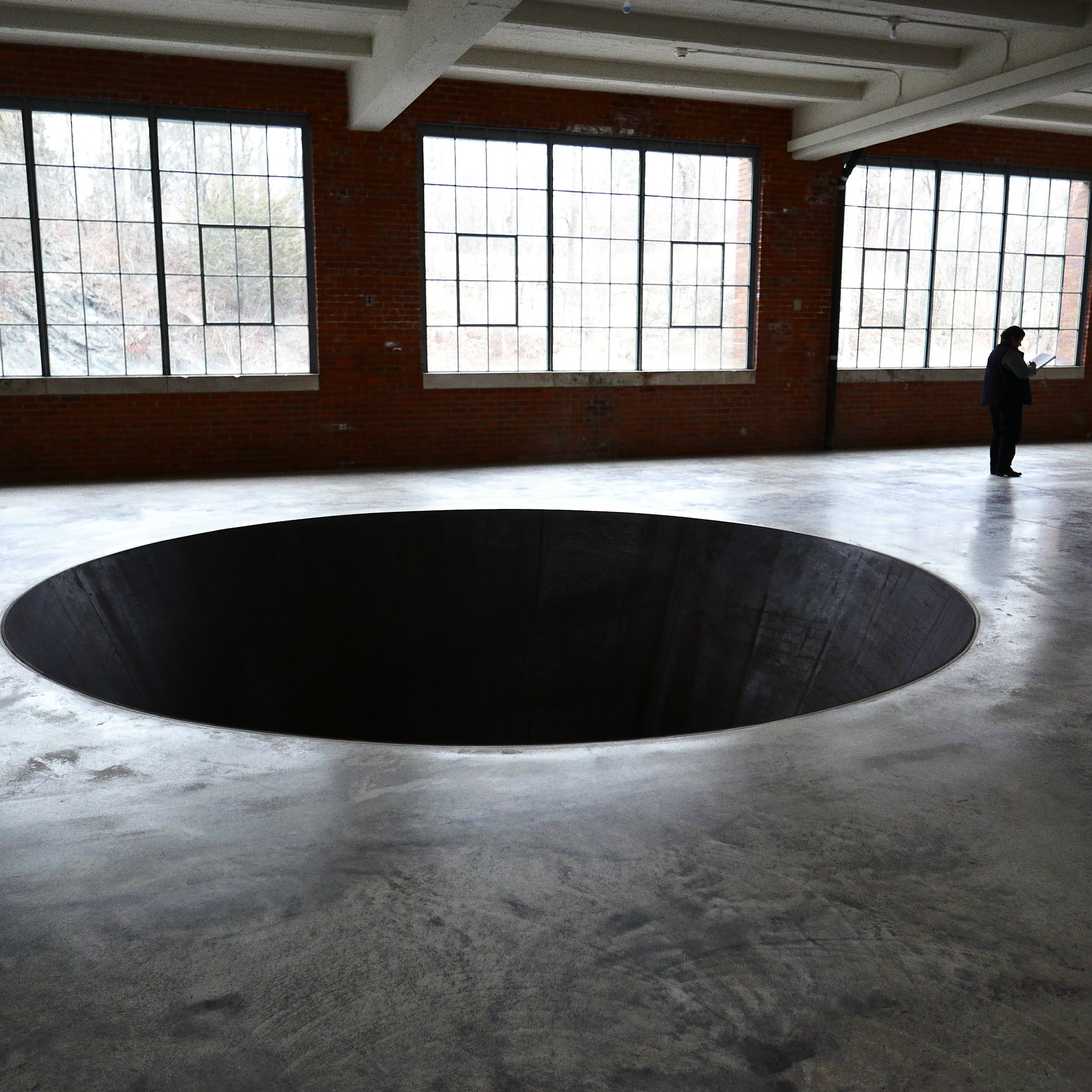Dia:Beacon
Michael Heizer
North, East, South, West. 1967/2002. Dia Art Foundation
The above images could never capture the scale, depth and fear associated with standing on the edge of one of Heizer's "negative sculptures." There is no choice but to visit these works in person if you want to experience a confrontation with emptiness...
The following is an excerpt taken from the Dia:Beacon website:
In the mid 1960s, Michael Heizer made a series of trips to his home states of and California and Nevada to experiment in the desert landscape. Originally a painter, Heizer had already made several works in which geometric shapes were carved out of canvases. He soon realized that these functioned more as “diagrams of dimensions” than visual planes and set out to realize these plans in three-dimensional form, free from the constraints of the stretcher and canvas. Cutting into the landscape, Heizer developed the concept of a “negative sculpture,” where the presence of the work of art is made palpable precisely through its material absence.
Heizer’s first negative sculpture, North, East, South, West was conceived as a series of four excavated geometric pits: two stacked cubic forms, one larger and one smaller (North); a cone (South); a triangular trough (West); and an inverted truncated cone (East). The title also alludes to the cardinal points—a reflection of the artist’s interest in the discrepancies between mapped versus actual space. The work was conceived and only partially executed in 1967 as North and South. Decades after these two components were dismantled, Dia commissioned Heizer to produce the complete series as a permanent installation for Dia:Beacon. Built indoors, rather than outside, together the pits measure more than 125 feet in length and sink from the floor of the gallery to a depth of 20 feet. When the work was first developed, such dimensions had no precedent in the art of recent times.








